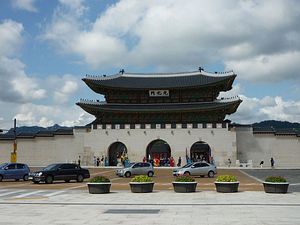A few days ago, I attended a conference hosted by one of the major think tanks in South Korea. It was a bilingual (Chinese-Korean) forum, and a little surprisingly most of the scholars from South Korea could communicate quite conveniently in Mandarin with Chinese participants. Then, a few days later, there was another academic salon where people from China, South Korea, Japan, and even the United States talked about current issues in East Asia, again in the Chinese language. Educational backgrounds and research interests play a role, but the fact is that more and more South Koreans can speak Chinese compared to some years ago.
As a Chinese citizen living in South Korea, I have noticed and also observed the “Chinese language craze” in South Korean society ever since I came to this country almost 12 years ago. Now hundreds of thousands of South Koreans take Chinese language classes in numerous language institutes or with private tutors, not to mention the students majoring in Chinese in almost all of South Korea’s colleges and universities. Although there are of course fluctuations with regard to the total number of Chinese-major freshmen in university departments, there’s a general feeling that nowadays learning and speaking Chinese is more useful than learning and speaking Japanese for South Koreans.
Things were not like this before. In 1970, then-South Korean President Park Chung-hee banned Chinese characters from being taught in schools or used in official documents. Nowadays Chinese characters are being more frequently used in South Korea – they are taught in schools again, and they are found in street names, billboards, city maps, and tourist guides, as well as on numerous hand-written sheets (to attract Chinese tourists) on the windows of shops in places like Myongdong and Namdaemun Market.
But there are controversies as well. For example, when the signboard at Gwanghwamun (the main gate to Gyeongbokgung Palace) was finally reconstructed in 2012, South Korean public opinions sharply divided regarding whether to use the original Chinese characters or Hangul (the Korean alphabet). According to Yonhap News, a public poll actually indicated that 57.8 percent of the respondents favored Haneul while 41.3 percent favored Chinese characters. A critic supporting the use Hangul explained that if Chinese characters were used, there would be problems with visitors “not knowing whether they are in Seoul or Beijing or Tokyo.” The final decision favored a signboard with Chinese characters, but obviously that was not an easy decision.
Another complication is the fact that simplified Chinese characters are used in mainland China (and actually are becoming more popular because of their convenience), whereas traditional Chinese characters have been widely used in the Korean Peninsula for hundreds of years and they are still being used in South Korea in official and formal occasions. When we were exchanging business cards in the academic salon I mentioned earlier, a South Korean scholar who speaks perfect Mandarin explained that there is a special Chinese character in his name. It is a “Korean” Chinese character, he said, meaning that it was created and only used in Korea. It reminded me that for South Koreans, simplified Chinese characters may seem a genuinely “foreign” language, while traditional Chinese characters and uniquely “Korean” Chinese characters are part of South Korea’s own traditional cultural heritage..
It is quite interesting to see these differences between China and South Korea regarding a seemingly shared cultural heritage. Although these subtle differences do not necessarily harm bilateral ties between the two neighbors, a consensus or convergence with regard to the usage of Chinese characters would probably help to improve communications between these two countries in the long run. In fact, there was an agreement in 2013 among experts from China, South Korea, and Japan to adopt a chart of roughly 800 commonly-used Chinese characters for use between the three countries.
Knowing that hundreds of Chinese characters are commonly used in East Asia, and that hundreds of modern Chinese terms (particularly in the fields of science and politics) were imported from Japan, this chart may also help us to keep thinking: Is modern Chinese language completely “Chinese?” Or does it truly have a shared East Asian commonality?

































